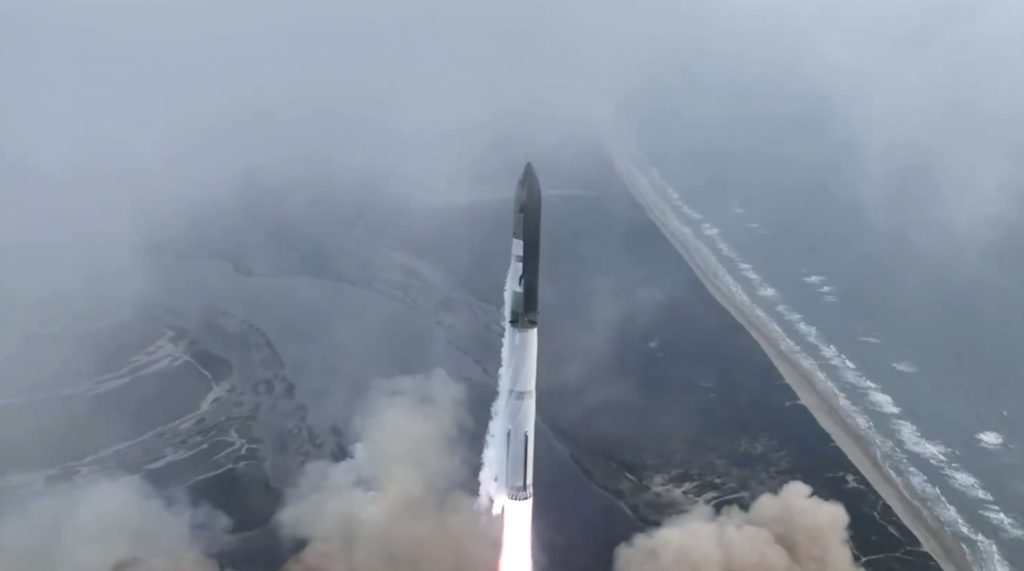WASHINGTON — SpaceX’s Starship craft took off on its third test flight March 14, showing significant improvement compared to its first two.
The Starship/Super Heavy craft took off from the company’s Starbase site at 9:25 a.m. Eastern. The liftoff was delayed by nearly an hour and a half because of ships in restricted waters offshore. SpaceX reported no technical problems during the countdown.
The Super Heavy booster fired all 33 of its Raptor engines for almost three minutes before performing “hot staging”, with the Starship upper stage’s engines igniting while still attached to Super Heavy. The booster then conducted burns to attempt what SpaceX webcast hosts called a “soft splashdown” in the Gulf of Mexico, where it would not be retrieved. However, the landing burn did not seem to go as planned, and telemetry suggested the booster hit the water at speeds over 1,000 kilometers per hour.
The Starship upper stage carried out its burn, placing the craft onto its planned suborbital trajectory. It avoided the fate of the previous Starship launch in November, when the craft broke apart late in its burn after catching fire while venting propellant.
While in space on its suborbital trajectory, SpaceX opened a payload bay door that will be used on later Starship craft for deploying Starlink satellites. It also carried out an in-space propellant transfer demonstration as part of a NASA contract where it would move propellant from one tank within the craft to another.
The launch followed a final regulatory milestone, an updated Federal Aviation Administration launch license, issued late in the day March 13. The license required an additional environmental review after SpaceX changed the craft’s trajectory from the first two integrated test flights, targeting a splashdown in the Indian Ocean rather than near Hawaii.
That environmental assessment revealed that SpaceX anticipated Starship to explosively break apart upon splashdown. While Starship would vent some propellant while in space before reentry, the assessment stated that the company anticipated to have 70,000 kilograms of liquid oxygen and methane propellants in its main tanks and 30,650 kilograms in “header” tanks in the nose of the craft.
“Starship would impact the Indian Ocean intact, horizontally, and at terminal velocity,” the environmental assessment states. “The impact would disperse settled remaining propellants and drive structural failure of the craft. The structural failure would immediately lead to failure of the transfer tube, which would allow the remaining liquid oxygen (LOX) and methane to mix, resulting in an explosive event.”
The assessment noted that SpaceX did not plan to recover any Starship debris or have any boats or aircraft in the area to monitor the reentry and splashdown. It added that “any debris is expected to have sufficient mass to sink to the seafloor.”
The different trajectory allowed the company to carry out tests such as the first in-space firing of the Raptor engine. Flying a steeper suborbital trajectory, with a planned maximum altitude of 235 kilometers, allows a test without substantially altering the splashdown location and threatening public safety, SpaceX hosts said on the company’s launch webcast.









